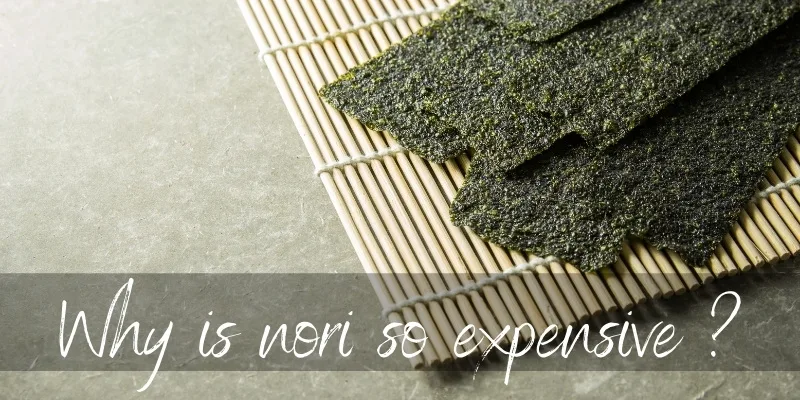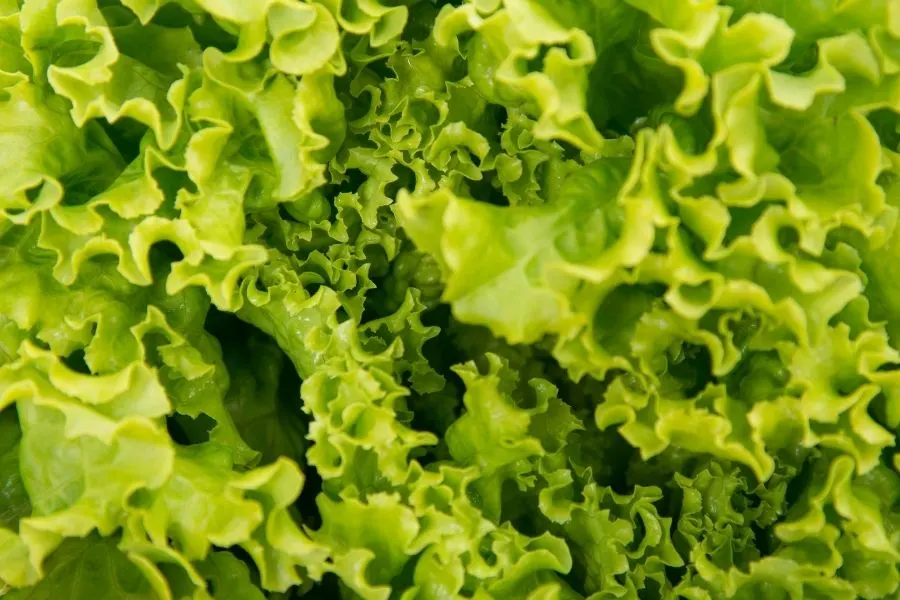Are you a sushi fan ? So much so that you’ve decided to make your own at home ? Then you know getting all the ingredients can be pretty expensive, especially if you live outside Southeast Asia. The fish and other meat we can understand, but a cost that’s often surprisingly high is the nori sheet.
Why is nori so expensive ? When you think about it a single sheet is worth 6-8 sushi rolls, and if you’re making a larger batch you’ll go through a pack in one sitting. So let’s take a look at what makes nori worth its price.

Why is nori so expensive ?
Nori tends to be expensive because it needs to be imported from Southeast Asia, and the production process of nori is complex and requires a large amount of sea surface.
The main nori producer is Japan, followed by China. Good nori is made form good seaweed, meaning it has to be grown in clean, unpolluted waters and then processed into the paper-thin sheets we use for sushi.
Let’s explore this in more detail, because each factor is tied to another. If you really want to know why nori is expensive, you need to understand the whole picture.
1. Nori production is complex and costly
Let’s start with the seaweed itself. You can’t use just any ‘ol seaweed you have around, you need a good crop. There are two red algae species used called Pyropia yezoensis and Pyropia tenera. These are grown along the Japanese coastline in large, dedicated swaths of water surface.
The entire industry focuses on keeping the algae production safe and thriving, and then there is the actual production of the dried nori sheets.
Read also: Why Is Sushi So Expensive ?
These are made using an ancient Japanese paper-making method. The entire process relies on the biology of the Pyropia algae, and would probably need to be changed if another type of algae would be used.
When it comes to the production process itself it’s not done by hand, it’s done by machines that are programmed to mimic the handmade production process. This way both quality and consistency are ensured. Said machines are expensive and must be maintained, so this adds to the total cost of a single nori sheet.
Keep in mind that most of the time a nori sheet must be dried and lightly toasted, which is an extra production step.
2. Nori is imported, which brings extra costs
Nearly all nori is made in Southeast Asia, but especially in Japan and China. You may also find nori made in Korea, the Philippines, and sometimes even Canada. Not all producing countries use the Japanese favorite (Pyropia). For example China uses Laminaria heavily, while others may use Porphyra.
Whatever species of algae is used, the manufacturing process is largely the same, and the vast majority of nori is still imported. This incurs extra costs, and some brands are original Asian brands which drives the price even higher (but ensures quality).
An important note about nori: it absorbs moisture very easily, so the sheets must be handled with care during transport. Ripped packaging compromises the entire pack.
3. Quality nori is made with quality seaweed
When we say quality we meant the water in which the seaweed is grown. If you’ve ever been to the seaside you know the water isn’t always clean, but algae grows there anyway.
The thing is, clean and unpolluted waters are key for algae growth because in the end that’s what you eat in a nori sheet. If the algae is grown in polluted areas, close to sewage disposal sites then you can probably guess what it’s using for nutrients.
So, seaweed needs to be farmed off the coastline, in clean water. Not only that but the crop has to be of good quality, and that’s often the first couple of harvests. You can harvest seaweed several times a year, about every 10 days. But like tea leaves, the first are the the most tender, and thus the best for making thin sheets of nori.
Another reason nori sheets are expensive is because they’re used almost exclusively for sushi and/or onigiri. Both of these are still viewed as niche products in the West. They’re more of a treat, something you have for special occasions or on a fancier night out than for your usual dinner.

As such, the price is higher and you may find nori only in specialized stores, in in the Asian aisle of most supermarkets.
Alternatives to nori for sushi
If nori is too expensive for your budget or you don’t really like the idea of seaweed, you can easily swap it for another ingredient. While nori is traditional and rounds on the flavor of whatever sushi you’re making, the following substitutes may be up your alley.
And you can even use these in a variety platter, with traditional sushi and more modern twists with a different outer layer.
Cucumber, sliced or cored
One of the most popular ways to replace nori is by using cucumber slices. You can do this using a large English cucumber and slicing it into long, thin sheet using a mandolin. Or, if you’re particularly skilled with a knife and have the patience, you can peel a cucumber into thin, wide sheets until you get to the seeds.
Another option is to cut a chunk of cucumber the size of the sushi you want, core it, and stuff it with rice and the rest of the ingredients. How much cucumber you remove from the inside is up to you and your tastes.
Rice paper
If cucumber isn’t your thing then rice paper may be an option. Note that these are not the wrappers you use for spring rolls ! Spring rolls are fried, and use a wheat-based sheet that needs cooking.
Rice paper is much thinner, needs no cooking, and can easily envelop an entire sushi roll. The only problem is that these sheets are round, and you might only get like 4 sushi rolls out of the whole thing, but you could make an interesting fusion and wrap the sushi like you would a spring roll.
Lettuce leaves
If all else fails you could also try lettuce leaves. They’re thin, crisp, and bring a nice pop of color. You need to use the tender, softer ends of the rolls, otherwise you risk the sushi unravelling. That, or you should sit the sushi on the end of the leaf, so it keeps itself wrapped.
We assume that lightly smearing the lettuce leaves with sauce may help it stick to the rice better, so you could try that.

Read Also: Why Is Sashimi So Expensive ?
A very thin omelet
Another option would be to try and make the thinnest omelet you can, and use that to wrap around the sushi. If you’re making this with seafood then you can definitely for a protein-heavy style sushi, incorporating some tofu while you’re at it.
If you’re worried the omelet won’t survive the rolling, try experimenting with different thicknesses because too thick will definitely crack, as will too thin.
And hey, even if it does crack a little you can always sprinkle some sesame seeds on top and claim it’s the original design idea.
So there you go, why nori is expensive and what you can use instead of nori for sushi. Sure it’s definitely a step away from the traditional sushi roll but it’s worth trying something else at least once.

